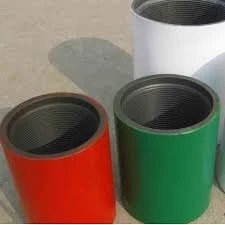- Afrikaans
- Albanian
- Amharic
- Arabic
- Armenian
- Azerbaijani
- Basque
- Belarusian
- Bengali
- Bosnian
- Bulgarian
- Catalan
- Cebuano
- Corsican
- Croatian
- Czech
- Danish
- Dutch
- English
- Esperanto
- Estonian
- Finnish
- French
- Frisian
- Galician
- Georgian
- German
- Greek
- Gujarati
- Haitian Creole
- hausa
- hawaiian
- Hebrew
- Hindi
- Miao
- Hungarian
- Icelandic
- igbo
- Indonesian
- irish
- Italian
- Japanese
- Javanese
- Kannada
- kazakh
- Khmer
- Rwandese
- Korean
- Kurdish
- Kyrgyz
- Lao
- Latin
- Latvian
- Lithuanian
- Luxembourgish
- Macedonian
- Malgashi
- Malay
- Malayalam
- Maltese
- Maori
- Marathi
- Mongolian
- Myanmar
- Nepali
- Norwegian
- Norwegian
- Occitan
- Pashto
- Persian
- Polish
- Portuguese
- Punjabi
- Romanian
- Russian
- Samoan
- Scottish Gaelic
- Serbian
- Sesotho
- Shona
- Sindhi
- Sinhala
- Slovak
- Slovenian
- Somali
- Spanish
- Sundanese
- Swahili
- Swedish
- Tagalog
- Tajik
- Tamil
- Tatar
- Telugu
- Thai
- Turkish
- Turkmen
- Ukrainian
- Urdu
- Uighur
- Uzbek
- Vietnamese
- Welsh
- Bantu
- Yiddish
- Yoruba
- Zulu
well casing extension coupling
Understanding Well Casing Extension Couplings
Well casing is an essential component in the drilling industry, serving as the structure that holds the wellbore open, protects groundwater, and allows for the extraction of oil and gas. However, as drilling techniques evolve and the demands on wells increase, the need for reliable coupling mechanisms becomes paramount. Among these are well casing extension couplings, which facilitate the extension of well casings without compromising structural integrity.
What Is a Well Casing Extension Coupling?
A well casing extension coupling is a specialized device designed to connect additional lengths of casing to an already installed casing string. It allows operators to extend the casing deeper into the wellbore without the need for extensive removal of the existing casing or starting the drilling process anew. This is particularly beneficial in applications where well depths vary or where unexpected geological formations necessitate additional casing lengths to maintain structural integrity and safety.
The Importance of Casing Extensions
There are several reasons why casing extensions may be required in well operations. The geological conditions of a drilling site can change unexpectedly, requiring adjustments to the casing length for stability. For instance, in areas where loose soil or unstable rock formations are encountered, extending the casing ensures that the well remains open and secure. Moreover, in cases where additional production zones are identified at greater depths, casing extensions allow for the efficient access and extraction of oil or gas from these new zones.
Design and Material Considerations
The design of well casing extension couplings must adhere to strict engineering standards. They are typically constructed from high-strength steel to withstand the extreme pressures and temperatures encountered during drilling and production. The coupling must also possess excellent resistance to corrosion, given the various environmental conditions the casing may be exposed to over its operational life.
Extension couplings are engineered to maintain a tight seal between the casing segments, preventing the influx of unwanted fluids and ensuring the integrity of the well. A common design includes threaded ends that securely fasten to the existing casing and the new extension, providing a reliable connection that can sometimes withstand up to thousands of psi of pressure.
Installation Process
well casing extension coupling

The installation of well casing extension couplings is a highly technical process. It involves several steps
1. Preparation Before installing an extension coupling, the existing casing must be thoroughly inspected for any signs of wear or damage. This ensures that the coupling will attach to a secure substrate and that the overall integrity of the casing string is maintained.
2. Alignment The new casing section needs to be properly aligned with the existing casing. Misalignment can lead to structural weaknesses and potential failure.
3. Connection The coupling is then threaded onto the existing casing, and the new casing length is attached. This step requires precision to make sure that the threads are properly engaged and that the connection is secure.
4. Testing After installation, pressure testing is often performed to check the integrity of the new connection. This ensures that the coupling is leak-proof and capable of withstanding the pressures of the well environment.
Challenges and Best Practices
While casing extensions and their couplings provide significant benefits, they also come with challenges. One major issue is the risk of buckling under radial loads, especially in deep wells where the pressure is high. Operators must carefully calculate the necessary casing thickness and coupling design to mitigate this risk.
Additionally, best practices in installation and maintenance play a pivotal role in the long-term success of well casing extensions. Regular inspections and monitoring for corrosion or wear can prevent potential failures, ultimately prolonging the life of the well.
Conclusion
In conclusion, well casing extension couplings represent an essential innovation in the oil and gas drilling industry. They offer a practical solution for extending casing lengths as operational demands change while ensuring the structural integrity of the well. By understanding their design, importance, and the challenges involved in their use, operators can enhance the efficiency and safety of their drilling operations, ultimately contributing to more sustainable resource extraction in an ever-evolving industry.
-
Tubing Pup Joints: Essential Components for Oil and Gas OperationsNewsJul.10,2025
-
Pup Joints: Essential Components for Reliable Drilling OperationsNewsJul.10,2025
-
Pipe Couplings: Connecting Your World EfficientlyNewsJul.10,2025
-
Mastering Oilfield Operations with Quality Tubing and CasingNewsJul.10,2025
-
High-Quality Casing Couplings for Every NeedNewsJul.10,2025
-
Boost Your Drilling Efficiency with Premium Crossover Tools & Seating NipplesNewsJul.10,2025







